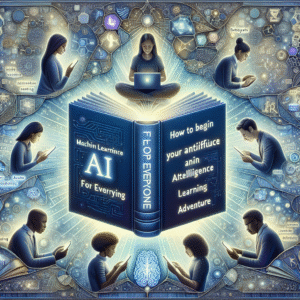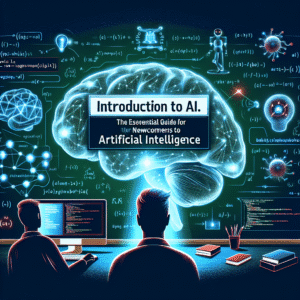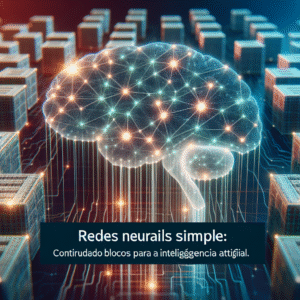Artificial Intelligence (AI) has rapidly evolved from a futuristic concept to an integral part of many aspects of daily life and industry. With its ability to simulate human intelligence processes through machines, AI is revolutionizing industries, changing how we interact with technology, and reshaping the future of the workforce. In this article, we will explore the different types of AI and their transformative potential across various sectors.
Understanding the Types of AI
AI can be broadly categorized into three types based on their capabilities: Narrow AI, General AI, and Superintelligent AI.
Narrow AI
Narrow AI, also known as Weak AI, is designed to perform a specific task. These systems are focused, with limitations in scope, but they can surpass human abilities in their specialized area. Common examples include:
- Speech Recognition: Siri and Alexa utilize Narrow AI to understand and respond to human speech.
- Recommendation Systems: Platforms like Netflix and Spotify use AI algorithms to recommend content based on user preferences.
- Autonomous Vehicles: Self-driving car systems like Tesla’s Autopilot rely on Narrow AI for navigation and decision-making.
Narrow AI’s real impact lies in its ability to increase efficiency, reduce errors, and enhance user experiences.
General AI
General AI, or Strong AI, refers to systems that possess the ability to understand, learn, and apply intelligence across a range of tasks, much like a human. Although true General AI does not yet exist, its development remains the ultimate goal within the AI research community. It promises significant advancements in problem-solving and cognitive abilities, offering more dynamic and adaptable responses similar to human thought processes.
Superintelligent AI
Superintelligent AI is a theoretical concept where AI surpasses human intelligence in every aspect, from creativity to problem-solving and beyond. While still hypothetical, the potential impacts raise important ethical considerations, as it could lead to unprecedented advancements or challenges depending on its alignment with human values.
Transformative Potential Across Industries
AI is already reshaping various industries, offering unparalleled opportunities for innovation and efficiency. Let’s explore some key sectors where AI is making substantial impacts.
Healthcare
In healthcare, AI is revolutionizing diagnostics, treatment planning, and patient care. Machine learning algorithms can analyze vast amounts of medical data to identify patterns and predict disease outbreaks. Applications include:
- Medical Imaging: AI-powered imaging systems can detect anomalies in X-rays and MRIs more accurately than human radiologists.
- Personalized Medicine: AI algorithms analyze genetic information to tailor individualized treatment plans, increasing effectiveness.
- Patient Monitoring: Wearable technology equipped with AI can predict potential health issues, allowing for timely interventions.
Finance
The finance industry utilizes AI to enhance decision-making processes and customer service. Key applications include:
- Fraud Detection: AI systems can identify suspicious transactions in real-time, minimizing financial losses.
- Algorithmic Trading: AI models analyze vast data sets to make investment decisions, optimizing returns.
- Customer Support: Chatbots provide efficient customer service, handling routine inquiries and freeing up human agents for complex issues.
Retail
AI is transforming the retail landscape by enhancing customer experiences and streamlining operations. Some applications are:
- Inventory Management: AI predicts demand trends, optimizing stock levels and reducing waste.
- Personalized Marketing: By analyzing consumer data, AI offers personalized product recommendations, increasing sales and customer satisfaction.
- Checkout Automation: AI-enabled systems in stores provide seamless, cashier-less checkout experiences.
Manufacturing
In manufacturing, AI enhances production efficiency and quality control. Examples include:
- Predictive Maintenance: AI systems forecast equipment malfunctions before they occur, reducing downtime and maintenance costs.
- Quality Assurance: Automated inspection systems use AI to detect defects, ensuring higher quality products.
- Supply Chain Optimization: AI analyzes logistics data to improve supply chain efficiency, reducing costs and delivery times.
Education
AI is also transforming education by offering personalized learning experiences and administrative efficiency:
- Personalized Learning: AI-driven platforms adapt educational content to individual learning styles and paces, enhancing student engagement and outcomes.
- Administrative Automation: AI streamlines tasks such as enrollment and grading, allowing educators to focus on teaching.
- Virtual Tutors: AI-powered tutors provide additional support to students, reinforcing concepts and assisting with homework.
Transportation
Transportation is another domain experiencing significant AI-driven changes:
- Autonomous Vehicles: Self-driving technologies rely on AI to navigate and make real-time decisions, improving safety and reducing congestion.
- Traffic Management: AI systems optimize traffic flow, reducing travel times and emissions.
- Logistics: AI improves route planning and delivery efficiency, lowering costs for shipping companies.
Challenges and Ethical Considerations
Despite AI’s transformative potential, it also presents challenges that need addressing:
- Job Displacement: Automation and AI may lead to job losses in sectors where repetitive tasks are prevalent, necessitating workforce reskilling and education.
- Privacy Concerns: AI systems require vast amounts of data, raising issues about user privacy and data protection.
- Bias and Fairness: AI models can perpetuate biases present in training data, leading to unfair outcomes in applications such as hiring or law enforcement.
- Ethical AI Design: Ensuring AI systems are designed ethically and transparently will be crucial to align them with human values.
The Future of AI
The future of AI holds immense promise and potential. As technology continues to advance, AI’s capabilities are expected to expand, offering opportunities for innovation and improved quality of life. Collaboration between governments, industries, and academia will be essential to harness the benefits of AI while addressing its challenges.
Investments in AI research, coupled with ethical considerations, will guide its development, ensuring that it serves the broader good. As we navigate the AI landscape, the focus should remain on creating sustainable, inclusive, and ethical AI systems that contribute to human prosperity.
In conclusion, AI is more than a technological breakthrough; it is a catalyst for change across sectors. Understanding its types and potential impact is crucial for leveraging its benefits responsibly, shaping a future where AI augments human abilities and enriches society.




